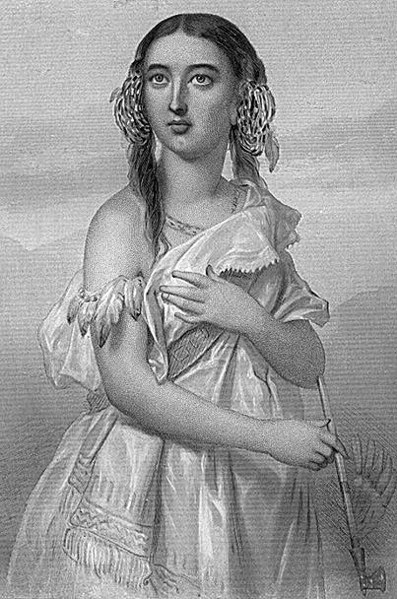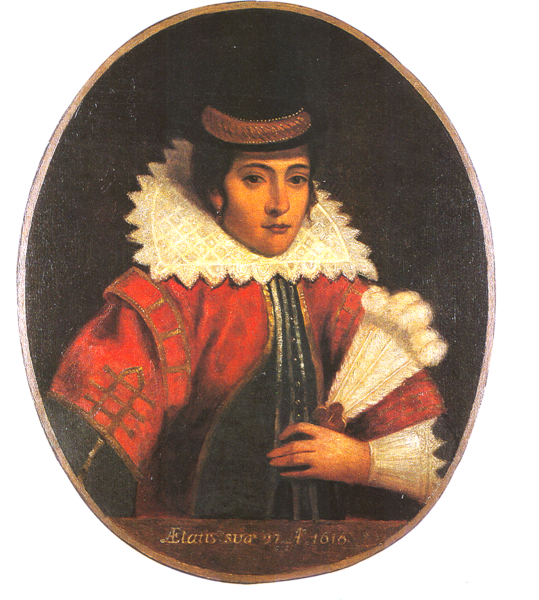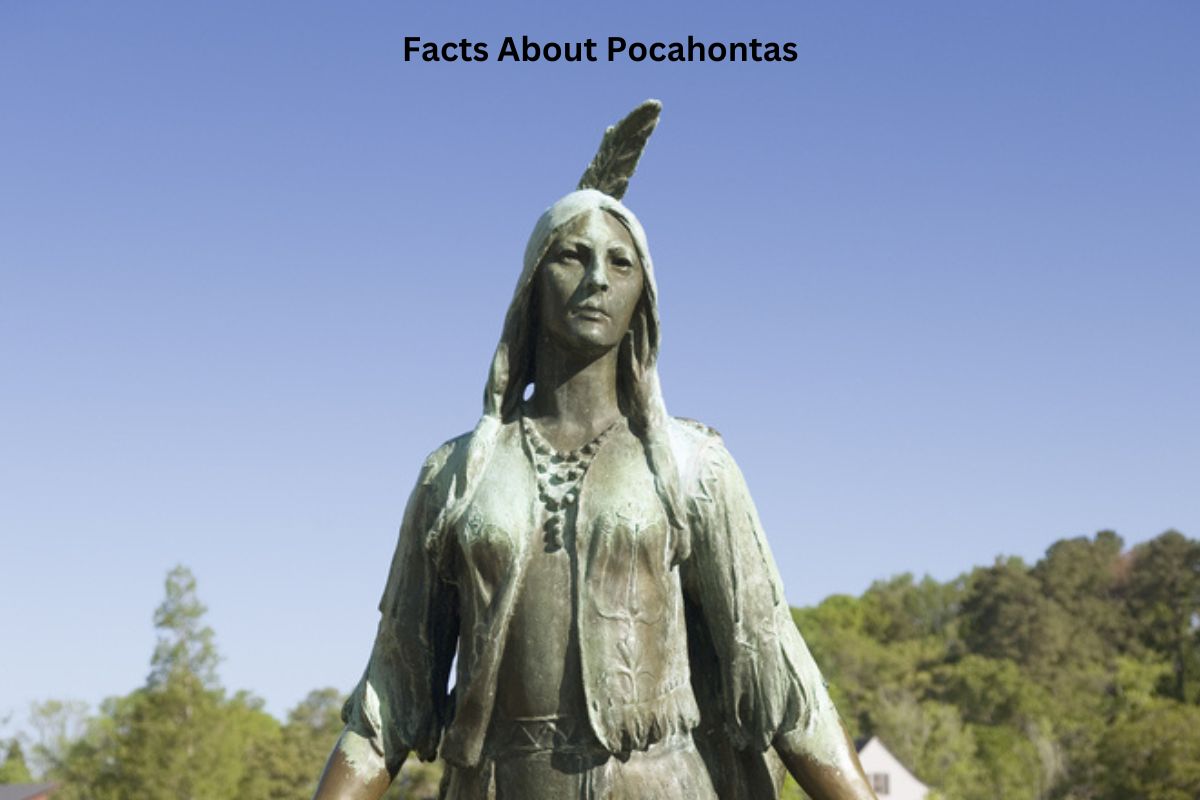Pocahontas, born Matoaka in 1596, was a prominent figure in early 17th century Virginia, known for her interactions with English colonists. She was the daughter of Powhatan, the chief of the Powhatan Confederacy.
Pocahontas is most famous for her role in saving the life of John Smith and her marriage to John Rolfe, which temporarily brought peace between Native Americans and English settlers.
She converted to Christianity, traveled to England, and passed away there in 1617.
Pocahontas’s life and legacy have been the subject of debate and have inspired numerous works of literature, art, and film, leaving an indelible mark on American history.
Pocahontas Facts
1. Born Matoaka in 1596
Pocahontas was born in 1596, but her given name at birth was Matoaka. Pocahontas was actually a nickname or a term of endearment given to her by her family, which meant “playful” or “mischievous” in the Powhatan language. She is more commonly known by this nickname today.

2. Daughter of Powhatan, a Native American chief
Pocahontas was the daughter of Powhatan, the paramount chief of the Powhatan Confederacy, a coalition of Algonquian-speaking tribes in the Tidewater region of Virginia.
Also Read: Pocahontas Timeline
Her father, Powhatan, ruled over multiple tribes and villages in the area. As the chief’s daughter, Pocahontas held a significant status within her society.
3. Saved John Smith’s life in a famous encounter
Pocahontas is perhaps best known for her role in saving the life of English colonist John Smith. According to Smith’s account, he was captured by Powhatan warriors in 1607 and brought to the chief’s village.
Also Read: Accomplishments of Pocahontas
Pocahontas, who was about 10 or 11 years old at the time, intervened and prevented his execution. She either placed her head on his, symbolizing her intercession, or begged her father to spare Smith’s life.
This act of mercy and diplomacy contributed to a brief period of improved relations between the Powhatan Confederacy and the English settlers at Jamestown.
4. Married John Rolfe in 1614
Pocahontas married John Rolfe, an English settler, in April 1614. This marriage was significant because it helped establish a period of peace between the English colonists and the Powhatan Confederacy.
It was seen as a diplomatic alliance that aimed to promote cooperation and trade between the two groups. The marriage also had personal significance for Pocahontas as it marked her transition into a different culture and way of life.

5. Took the name Rebecca and converted to Christianity
After marrying John Rolfe, Pocahontas took the English name “Rebecca” and converted to Christianity. She was baptized as Rebecca Rolfe in a Christian ceremony, which was a common practice for Native Americans who married English colonists.
Her conversion reflected the changing dynamics between the indigenous population and the European settlers in early colonial Virginia, as well as her willingness to adapt to her new life as a colonist’s wife.
6. Traveled to England in 1616
Pocahontas and John Rolfe embarked on a journey to England in 1616. Their voyage was part of a promotional effort by the Virginia Company to attract more settlers and investment to the colony.
Pocahontas, now known as Rebecca Rolfe, was presented as a symbol of successful colonization and the “civilizing” influence of Christianity on Native Americans.
Her presence in England generated considerable interest and curiosity among the English population, and she was introduced to members of the royal court, including King James I and Queen Anne.
7. Died in England in 1617
Pocahontas passed away in England in March 1617. She died at the relatively young age of around 21. The exact cause of her death remains a subject of historical debate.
Some sources suggest she may have succumbed to an illness or disease, while others attribute her death to the hardships she endured during her time in England.

8. Her life has inspired books, movies, and art
Pocahontas’s life has been a source of inspiration for various forms of literature, art, and media over the centuries. Her story has been the subject of numerous books, both fictional and non-fictional, as well as plays, poems, and songs.
Perhaps one of the most famous adaptations of her story is Disney’s animated film “Pocahontas,” which was released in 1995 and presented a romanticized version of her life.
9. Many people today are her descendants
Pocahontas had a son with John Rolfe named Thomas Rolfe, who was born in 1615 in Virginia. Many people today can trace their ancestry back to Thomas Rolfe, making Pocahontas a direct ancestor to some individuals and families in the United States and beyond. Her descendants are known as the “Pocahontas Clan.”
10. Her story is a subject of historical debate
The historical accuracy and interpretation of Pocahontas’s life have been a subject of debate and controversy. Some argue that her story has been romanticized and distorted over time, particularly in popular culture.
Critics point out that many details of her life, including the nature of her relationship with John Smith and John Rolfe, are based on written accounts from English colonists and may not represent the full truth. As a result, her historical narrative continues to be scrutinized and reevaluated by historians and scholars.
